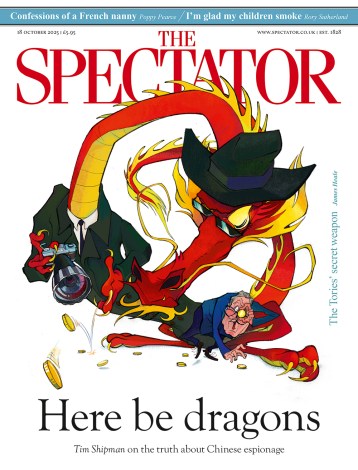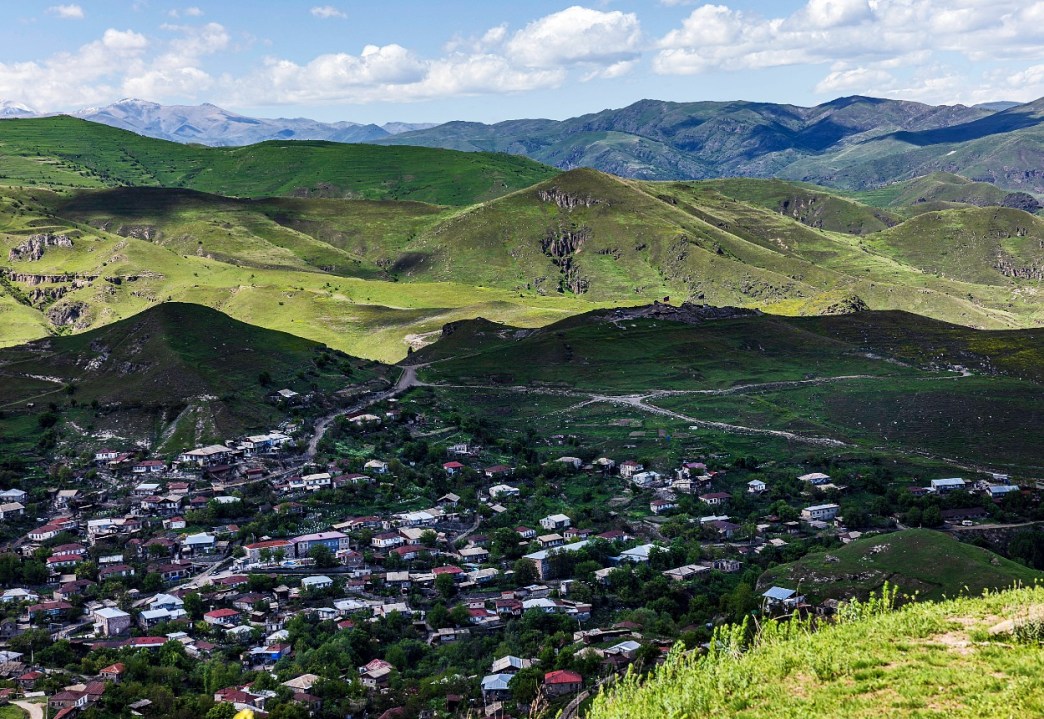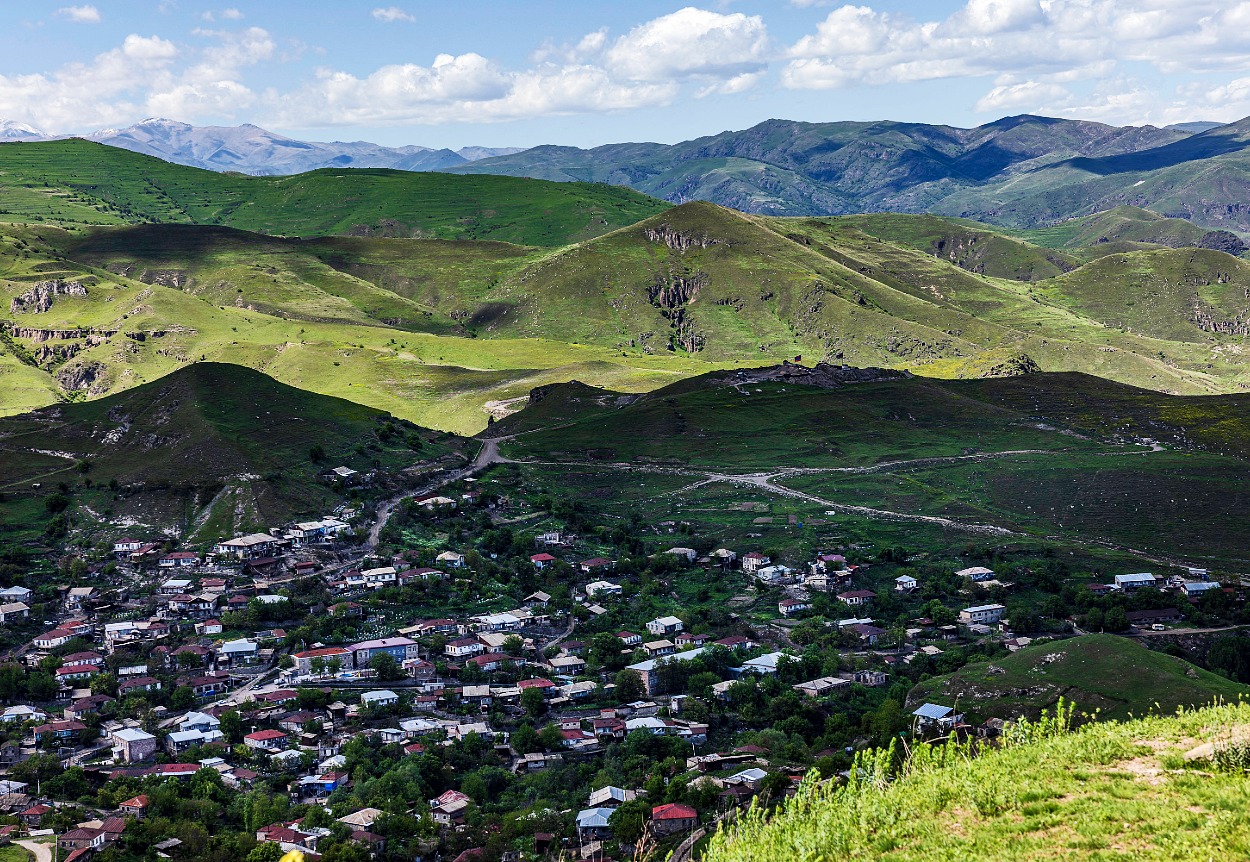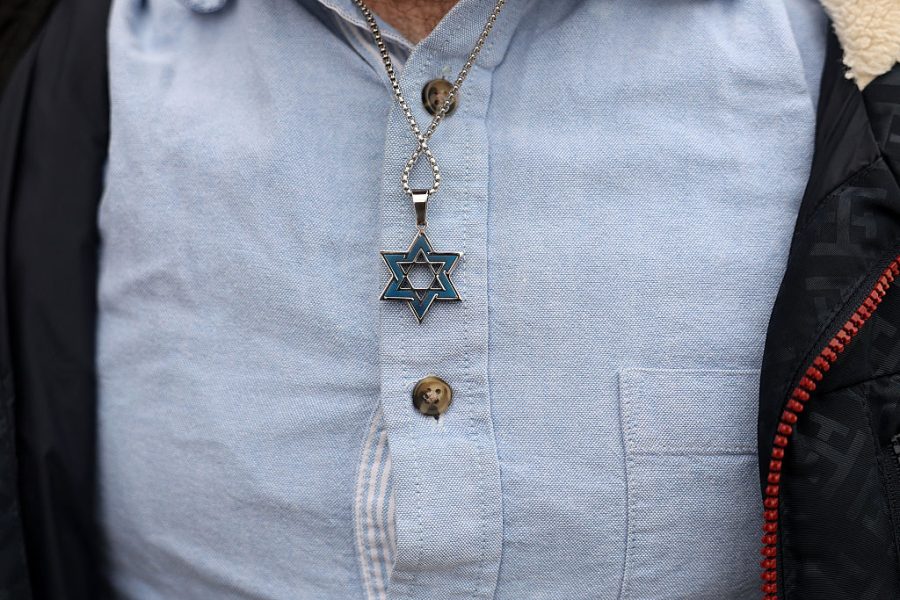On the Armenian banks of the winding Aras River, which represents the border with Iran, I am approached by two boys offering local grapes. The fruit is more yellow than green, and translucent and very sweet. ‘Are you American?’, one boy asks in Armenian. I am not, I tell them, and they are disappointed. It is late September and I am in Armenia, on the banks of this river, surrounded by the dramatic peaks of the Zangezur mountains, to film a programme for the BBC World Service about Donald Trump’s intervention in this country’s war with Azerbaijan. In early August, Trump announced with the leaders of Armenia and Azerbaijan that he had solved their 35-year conflict.
Defying sceptics, Trump brokered a deal on the most pressing issue – a corridor that Azerbaijan demanded be granted to its exclave through Armenia’s territory. Pre-Trump, Armenia rejected the demand, which Azerbaijan made in 2021, and, as neither side would budge, many feared new fighting. But at the White House, a compromise was found. A new transportation link will give unimpeded access to Azerbaijan while respecting Armenia’s sovereignty over its land. The solution is based on the idea that the road will be managed by a US company, perhaps on a 99-year deal. Leaders of both countries say the conflict has been resolved, and they praise Trump. They do not seem to mind him confusing Armenia with Albania and Azerbaijan with Cambodia, nor him naming the new road the ‘Trump Route for International Peace and Prosperity’ (Tripp).
Trump is not the first American leader who tried to resolve this conflict. For three decades, US, Russia and France have worked together to mediate between the two nations. He is perhaps the first to insert the US commercial interest in mediation. But will it work?
At the moment, the location of the Trump trail is post-apocalyptic. What used to be a busy railway station is abandoned, surrounded by only a dozen metres of track, a couple of rusted carriages and a shattered monument to a Bolshevik martyr executed by the British-aligned forces in 1918. Then, as now, this desolate corner of the world was a playground of world powers, a part of the terrain where ‘the Great Game’ was played. The railroad was first started by the Russian Empire and completed by the Soviets. But when Armenia and Azerbaijan became independent countries, they went to war twice, in 1992-1994 and again in 2020 (not to count constant border skirmishes). Infrastructure connecting the two countries was destroyed.
While we are filming, a Russian FSB patrol vehicle pulls in front of our car. A muscular young guy jumps out and heads straight towards us. I want to lecture him on the rights of accredited journalists on sovereign Armenian land, but before I can, he barks in Russian: ‘Are you the ones operating the drone?’ I notice a patch on his arm depicting a bear and the Russian flag. Our producer explains that the drone is not ours, and he leaves. Russian FSB border guards have been stationed on Armenia’s border with Iran since 1992. Now this 42-kilometre stretch of land is set to become Tripp, and many assume a large-scale and long-term US presence will accompany it. How will Americans co-exist here with Russians and Iranians? Nobody seems to know.
On our way back to Yerevan, the Armenian capital, we stop for a coffee. The sun is bright and Mount Ararat is in full view. Believed to be the place where Noah moored his Ark, it is Armenia’s most recognisable symbol. In fact the mountain is not in Armenia at all. It is across the border, in Turkey. Last year, Armenia’s ruling party decided to stop using Ararat as a national symbol as part of its overhaul of national identity. Prime Minister Nikol Pashinyan says that ethno-nationalism has made the country poor, unhappy and dependent on Russia. He sees a path to prosperity and sovereignty through normalisation with Azerbaijan and Turkey – and even a push for EU membership, although he accepts that is a long shot. It is hard to tell what people think of this new ideology. The government is unpopular, but the opposition even more so.
Trump’s deal may be a respite rather than a solution, but few people here mind
In Yerevan I wander around the neighbourhood where I lived for several months in the mid-2010s. Then the capital felt more Soviet than contemporary, a place stuck in time, but everything changed in 2022, when wave after wave of young Russians, both opposed to Putin’s war in Ukraine and fleeing mobilisation, piled into the city. Rents rose and neighbourhoods were gentrified. I hardly recognise my old street, aside from one working-class bar which has not yet been replaced by a café serving specialty coffee.
After the invasion of Ukraine, so much Russian money moved to Armenia that local banks did not know what to do with it. The country’s GDP showed record growth, but the spectre of another war, one between Azerbaijan and Armenia, kept many investors away. It also made many of my friends consider leaving the country. Now there is hope that the deal struck in Washington will end the uncertainty. Sitting down with a diplomatic source, I ask if war seems like a distant possibility now for the first time in many years. ‘Sure,’ he says. ‘It’s been like this for a couple of months, I guess. I don’t even think of it now.’
Perhaps Trump’s deal will be a respite rather than a solution, but few people here mind. Decades of this conflict led to over 25,000 people killed and almost a million displaced, including virtually the entire Armenian population of Nagorno-Karabakh, who fled advancing Azerbaijani troops that finally reasserted control over the region in 2023. Maybe, after several cycles of displacement, people want to the turn the page on armed conflict. Not a single shot has been fired on the Azerbaijan-Armenia border since the White House meeting.








Comments